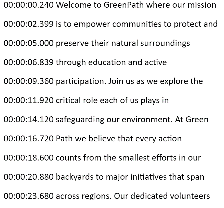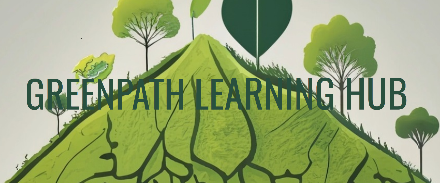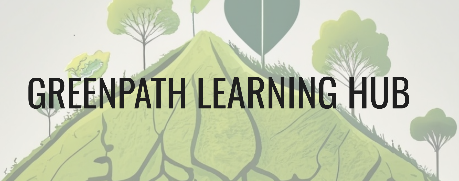Inclusive Learning Design Reflection
Inclusive design recognizes that each learner is unique, possessing different abilities, backgrounds, and needs by appreciating and embracing this diversity, inclusive design tailors educational experiences to meet individual needs, fostering self-awareness and self-determination among learners.
Upon further reflection, I found it surprising that only 70% of students with a disability report it. Many of these disabilities are “invisible”. Some invisible disabilities include diabetes, colorblindness, ADHD, and other physical or neurological conditions. The failure to report a condition could be due to any number of factors, including cultural, environmental, or psychological.
Engaging in simulations that replicate the challenges faced by individuals with physical or neurological disabilities offers valuable insights into their daily experiences. These immersive exercises allow participants to gain a firsthand understanding of the obstacles encountered by people with disabilities in everyday situations. By temporarily experiencing these limitations, individuals can develop a deeper sense of empathy and appreciation for the resilience and adaptability demonstrated by those living with disabilities. This experiential learning approach fosters greater awareness, compassion, and a more inclusive perspective on our society's diverse needs and experiences. For example, in a non-inclusive environment, a person with hearing loss may not be able to understand the learning content without captioning or transcripts. Designs that prioritize inclusion and accessibility tend to be more user-friendly for everyone. Features like high-contrast settings, autocomplete prompts, and voice control, originally created to aid accessibility, end up benefiting all users.
Understanding daily life through challenges that simulate physical or neurological disabilities, familiarizes oneself with the daily experiences of individuals with disabilities, and helping them develop empathy. This includes recognizing the increased effort required in daily life and their various challenges, such as pain, fatigue, and accessibility issues. Additionally, one cannot ignore the additional cognitive load one with a disability must face that others do not.
Broken computer mouse
Practical application
POUR is an acronym used in the context of Universal Design for Learning (UDL) that stands for Perceivable, Operable, Understandable, and Robust. These four principles guide the creation of accessible and inclusive learning materials and experiences. For this discussion, I would like to focus on the second: operable. Learning materials and interfaces must be navigable and interactive for all users, accommodating various physical abilities. These principles, adapted from web accessibility guidelines, help educators design learning experiences that cater to diverse student needs. Examples of Operability in action include ensuring keyboard navigation for digital content, allowing enough time to use the content, avoiding content known to cause physical reactions (e.g., seizures), providing ways to navigate and determine the location on the site, and allowing for multiple inputs other than a keyboard. Operability is outlined in the WCAG guidelines in section two.
Transcript
There are many tools that are available to check aspects of a website accessibility, ranging from color contract checkers to skip link analyzers and many more. The most difficult aspect of creating the evaluation was finding the tools and learning how to use them. An evaluation of the GreenPath website discovered that the video's transcription was missing from the Unit 1 page. To remedy this deficit, I imported the video to YouTube and used a free transcription tool called Tactiq. As seen in the image, the tool generated a fairly accurate transcription. Some punctuation edits needed to be manually corrected.
Original
Accessible
On the GreenPath website, some of the pages did not meet the color contrast requirements for a website to be considered accessible. Using the a contrast checking tool, I found that the original site the title page has a green value of # 274E13, and the green outline of the hill has a green value of # 344C2A, resulting in a 1.01:1 ratio. This would fail the color contrast requirements for an accessible site. To correct this, I faded the background image and used a black font to increase the color contrast to an appropriate ratio, as seen in the pictures below. For those with colorblindness, this subtle change makes all the difference between seeing the title of the page and not.
Universal Design for Learning (UDL) is an educational framework that provides flexibility in how students access material, engage with it, and demonstrate their knowledge, giving all learners an equal opportunity to succeed. In one instance, the content was only made accessible through visuals but never delved into auditory representations. For GreenPath’s Module 2, I added an audio option for the internal Word document using a text-to-speech application. The impact of this UDL change allows those with visual impairments to listen to the document. The changes are reflected in the images below.
Original
Accessible with audio option
Cultural Responsiveness
Incorporating culturally relevant pedagogues and strategies can significantly improve the inclusivity and effectiveness of training lessons by increasing student engagement, improving learning outcomes, and creating a more inclusive classroom environment. These approaches validate students' cultural identities, make content more relatable, and encourage critical thinking about real-world issues. By implementing culturally responsive strategies, such as using diverse materials, tailoring instruction to students' backgrounds, and encouraging the sharing of cultural knowledge, educators can create more equitable and effective learning experiences for all students.
Use people of different racial backgrounds in pictures and videos. The addition of a page that introduces volunteers from differing backgrounds and how they have impacted their communities to show real-world participants. Adapt the website content and functionality to suit different cultural contexts by translating text, images, symbols, and other elements. Use standard formats and tools to make the website easy to localize, ensuring it respects the cultural norms and practices of the target audience. Create a discussion forum via tools like Slack or Discord to foster interactivity between participants. Existing volunteers could serve as moderators to serve as SMEs and guides.
Introduce small localized community chapters of volunteers to share their experiences working with Greenpath. One should also design learning that encourages learners to think outside of the box and challenge their normal way of thinking about volunteer opportunities. Opportunities to work in different regions of the state (e.g., the Sonoran Desert versus the Colorado Plateau) allow students to experience the different environments they may not have previously had access to and stretch their existing knowledge.
Building a community on a learning website enhances the educational experience by providing support, motivation, and a sense of belonging, which fosters active participation and collaboration. It also offers networking opportunities and skill development, contributing to both personal and professional growth.
Reflective Insights
This course has taught me the importance of creating an inclusive learning environment by incorporating diverse perspectives, avoiding cultural bias in materials, and adopting a strengths-based approach that values each student's unique background and experiences. Another area of focus I need to improve upon is developing culturally responsive assessment methods by using alternative assessments like portfolios and projects, focusing on the learning process rather than just the final product, and ensuring grading practices are free from cultural or linguistic biases. As a member of a Native American Tribe, I can sign up as a volunteer for local events and work harder to stay abreast of learning opportunities offered by my tribe. Staying updated on new trends in the field can be as simple as signing up for a simple monthly emailed newsletter or as involved as attending accessibility conferences.
My prime takeaway of inclusive learning design is that it creates a more effective and accessible educational experience for all learners, regardless of their abilities, backgrounds, or learning styles. This approach not only accommodates diverse needs, but also enhances the overall learning experience for everyone, fostering innovation, and promoting equal participation in educational activities.






